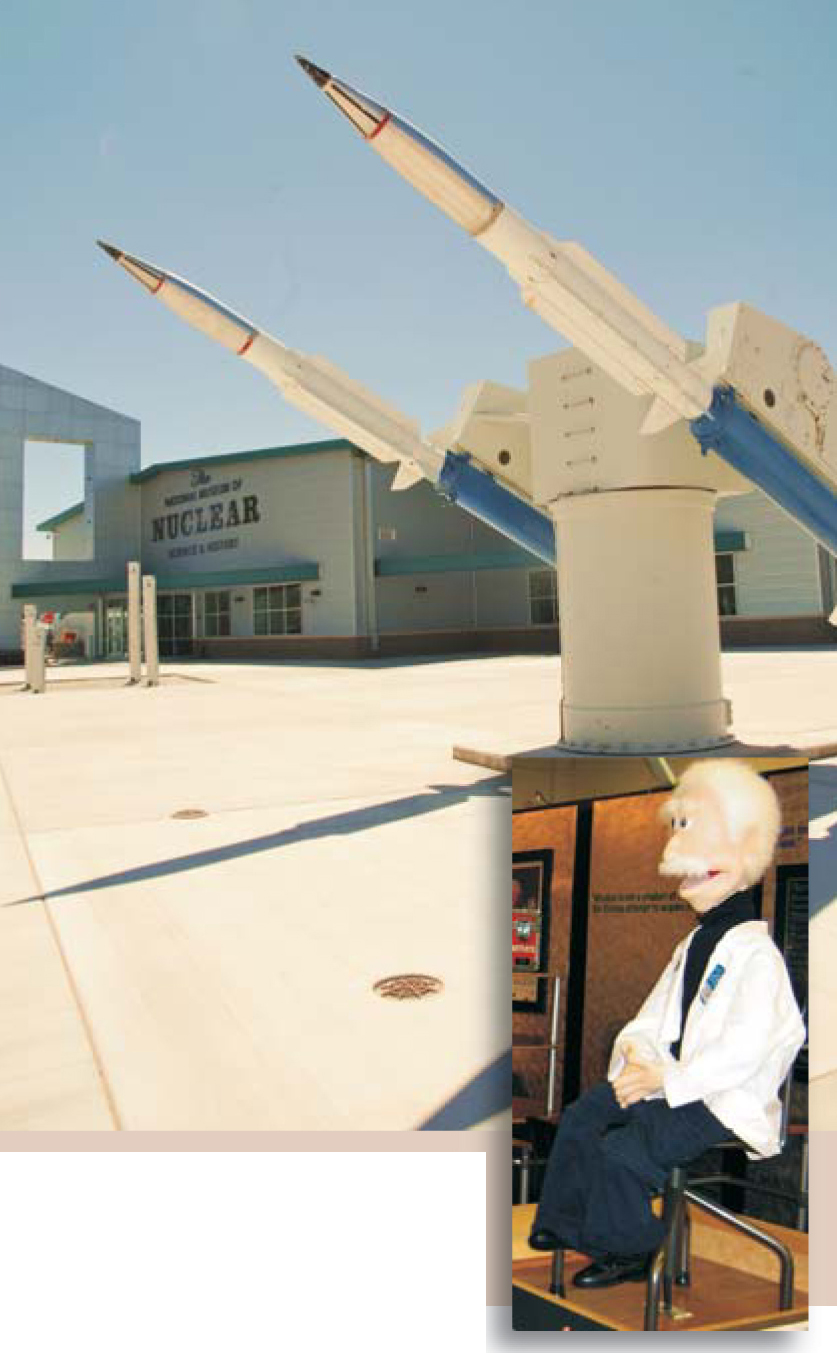Nuclear museum reopens in New Mexico
DOI: 10.1063/1.3156327
A naval surface-to-air missile launcher graces the entrance of the National Museum of Nuclear Science and History, which reopened this spring in a new location in Albuquerque, New Mexico.
The development of nuclear weapons and peacetime uses of nuclear reactions for food irradiation, medicine, and energy are featured at the expanded museum. Among the artifacts on view are a sample of ekanite, a gemstone high in radioactive thorium; the 1942 Packard limousine that transported J. Robert Oppenheimer and other scientists to and from Los Alamos during the Manhattan Project; and casings for the nuclear material from the Little Boy and Fat Man atomic bombs the US dropped on Hiroshima and Nagasaki during World War II.
Uranium mining is the focus of one exhibition. In another, visitors can juggle the proportions of nuclear, coal, wind, solar, and other forms of energy to see the effects on the cost of electricity and on greenhouse gas production. And then there is Little Albert (inset), a computer-controlled, interactive puppet that explains basic physics to visitors. If you ask, for example, “What is energy?” Little Albert replies, “Energy makes things happen. Energy makes things move or get hotter. You know how when you are riding a bike your legs turn the pedals which cause the bike to move forward? The energy moves from your legs to the bike.”
The museum originally opened 40 years ago at Kirtland Air Force Base as part of Sandia National Laboratories, but after the terrorist attacks in 2001, it had to move to remain open to the public. The museum is now independent and congressionally designated to disseminate information on nuclear science and its history.

NATIONAL MUSEUM OF NUCLEAR SCIENCE AND HISTORY

More about the Authors
Toni Feder. tfeder@aip.org
